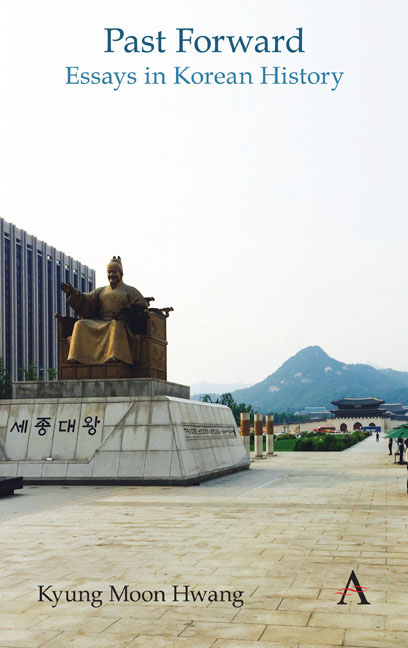Book contents
- Frontmatter
- Contents
- List of Figures
- Foreword
- Chronologies of Korean History
- Themes
- Acknowledgments
- Note on Romanization and Spelling
- Part I Circulating History
- Part II Durable Traditions
- Part III Ancient Remains
- Part IV Dynastic Depths
- Part V Modern Origins
- Part VI Challenges of Nationhood
- 30 Korea's Past in Light of Brexit
- 31 Openness and Exclusion
- 32 The North Korean View of History
- 33 Another Way to View National Division
- 34 The First National Assembly Elections
- 35 Who Started the Korean War?
- 36 Textbooks and Competing Nationalist Histories
- 37 The Complexities of Memorial Day
- 38 Adoption's Spotlight on Korean History
- 39 Questioning Monuments
- 40 Taking Ownership of the Past
- Part VII History Makers
- Part VIII External Presences
- Part IX Trials of Modernization
- Part X Gripped by the Past
- Index
35 - Who Started the Korean War?
from Part VI - Challenges of Nationhood
- Frontmatter
- Contents
- List of Figures
- Foreword
- Chronologies of Korean History
- Themes
- Acknowledgments
- Note on Romanization and Spelling
- Part I Circulating History
- Part II Durable Traditions
- Part III Ancient Remains
- Part IV Dynastic Depths
- Part V Modern Origins
- Part VI Challenges of Nationhood
- 30 Korea's Past in Light of Brexit
- 31 Openness and Exclusion
- 32 The North Korean View of History
- 33 Another Way to View National Division
- 34 The First National Assembly Elections
- 35 Who Started the Korean War?
- 36 Textbooks and Competing Nationalist Histories
- 37 The Complexities of Memorial Day
- 38 Adoption's Spotlight on Korean History
- 39 Questioning Monuments
- 40 Taking Ownership of the Past
- Part VII History Makers
- Part VIII External Presences
- Part IX Trials of Modernization
- Part X Gripped by the Past
- Index
Summary
The war that used to be called “Yug-i-o,” or “Six-two-five” (June 25) in South Korea is now mostly known, somewhat oddly, as the “Hanguk jeonjaeng,” or “Korean War,” even though “Hanguk” technically refers only to South Korea. This new standard term also seems to reflect the perspective of outside forces, although they were not really the main combatants and certainly not the main victims of this tragedy.
In North Korea, which insists that the Americans invaded the North that day in 1950, it is still called the “Fatherland Liberation War” (Joguk haebang jeonjaeng). It is clear, however, that the Korean War began when the North Korean army, under the direction of Kim Il-Sung, crossed the 38th Parallel border in a surprise attack before dawn on June 25, 1950. But we would do well to consider who else, beyond the North Koreans, contributed to sparking this catastrophic conflict:
The Soviets. The Soviet Union did not contribute troops to North Korea's invasion and publicly denied any involvement, but historical documents have revealed that the Soviet leader, Josef Stalin, gave the go-ahead and promised material and strategic assistance. The North Koreans could not have launched the war without Soviet permission, for the Soviet Union had as much to do with the formation of North Korea as anyone else. The Soviets entered the Korean peninsula even before Japan's formal surrender in World War II on August 15, 1945, and went on to exercise dominant control over their northern occupation zone. Most consequentially, the Soviet occupation installed Kim Il-Sung into his leadership position and suppressed all noncommunist political actors north of the 38th Parallel.
The Chinese. The Chinese provided a training ground for North Korean officers and soldiers who fought in the Chinese civil war of 1945–1949. Their return to North Korea before June 1950 would strengthen the North's readiness for the conflict. And China's leader Mao Zedong, like Stalin, had to sign off on Kim Il-Sung's plans to invade the South. It appears Mao was quite enthusiastic about the communists’ prospects, providing assurances of Chinese assistance if necessary. This turned out to be a self-fulfilling prophecy, as the Chinese People's Liberation Army entered the war in late 1950 to save the North Korean forces and North Korea itself.
- Type
- Chapter
- Information
- Past ForwardEssays in Korean History, pp. 101 - 103Publisher: Anthem PressPrint publication year: 2019



